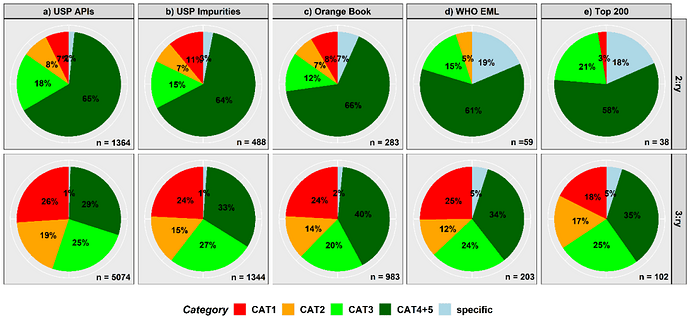I think a distinction is indeed needed between nitrosation on the tertiary amine (dealkylative nitrosation sensu stricto), nitrosation on the secondary amine impurity which is already there and subsequent demethylation and nitrosation of the tertiary amine. I believe Industry is doing this, if not in the risk assessment phase than in the root cause evaluation phase, but I would have expected updates in this context to Industry guidance as well, like more explicit distinctions in the EMA root cause list (checklist CMDh/439/2022).
For some nitrosamines from tertiary amines (stoichiometric conditions) historically, literature debates on the mechanism: first nitrosylation then demethylation or vice versa. By having to study such cases now as impurity chemistry (preferably taking into account moisture, oxygen and metal exposure as risk factors), a lot of new information is coming available, and in my experience the most important pathway for the exogenous nitrosamine formation does not always align with the literature reported most important pathway for endogenous nitrosamine formation linked to the same tertiary amine API. I personally recommend studying the non-classic Polonovski reaction in the context of dimethyl tertiary amines where the third N-substituent also starts with a CH2. Even in cases where the N-nitroso-demethylated API reference standard can be easily made from the API itself (which does not proof the order of the reaction steps of course), direct nitrosation is not per se the root cause on drug product. So besides 3 reaction scenarios there are also 3 cases (exogenous stoichiometrically, exogenous impurity chemistry (with matrix distinctions), endogenous) with possible different trends in mechanism prevalence.
I personally was surprised to see that the FDA guidance update (August and October 2023) didn’t make notes on distinct pathways for nitrosamine formation linked to tertiary amines nor explain their focus on tertiary amines with an N-methyl. Especially because compared to EMA, TGA and HC, FDA lists mostly N-nitroso-APIs and N-nitroso-desmethyl-APIs (linked to tertiary amine APIs) in the limit lists (exceptions are linked to Rifampicin, Rifapentine, Sitagliptin, Nicotine and mostly MAH submission driven (and of course not per se tertiary amine API based)), whereas the other regulators have much more “N-nitroso-API impurities beyond demethylated API” (cases include Alogliptin, Arpraziquantel, Chloropyramine, Ciprofloxacin, Gliclazide, Hydroxyzine, Levofloxacin, Lidocaine, Quetiapine, Ranolazine, Rivaroxaban, Ropivacaine, Rotigotine, Terbinafine, Valacyclovir, Valsartan (and of course not per se tertiary amine API based)). If the FDA limit list would be partially pushed to industry based on FDA available API lists (could the fact that originally (prior to October 2023 revision) some non-commercialised APIs were mentioned be a hint, together with the increased entries compared to other territories and the recommendation to use the list for re-assessing risks?) and theoretic assumptions rather than per se step 2 submissions or real detections, I would have expected some clarifications on the increased attention to demethylated API nitrosated compared to nitrosated API impurities in general. At first glance this suggests a confidence in the direct nitrosation on the tertiary amine, but in the context of impurity chemistry often N-oxide formation on the tertiary amine and subsequent non-classic Polonovski reaction to the demethylated API and subsequent nitrosation is possible as most relevant pathway towards the nitrosamine, whereas this chemistry is not per se more relevant or faster than dealkylative, deacylative,… chemistry on API towards API impurities in general and whereas API stability in this context can be highly matrix dependent.
